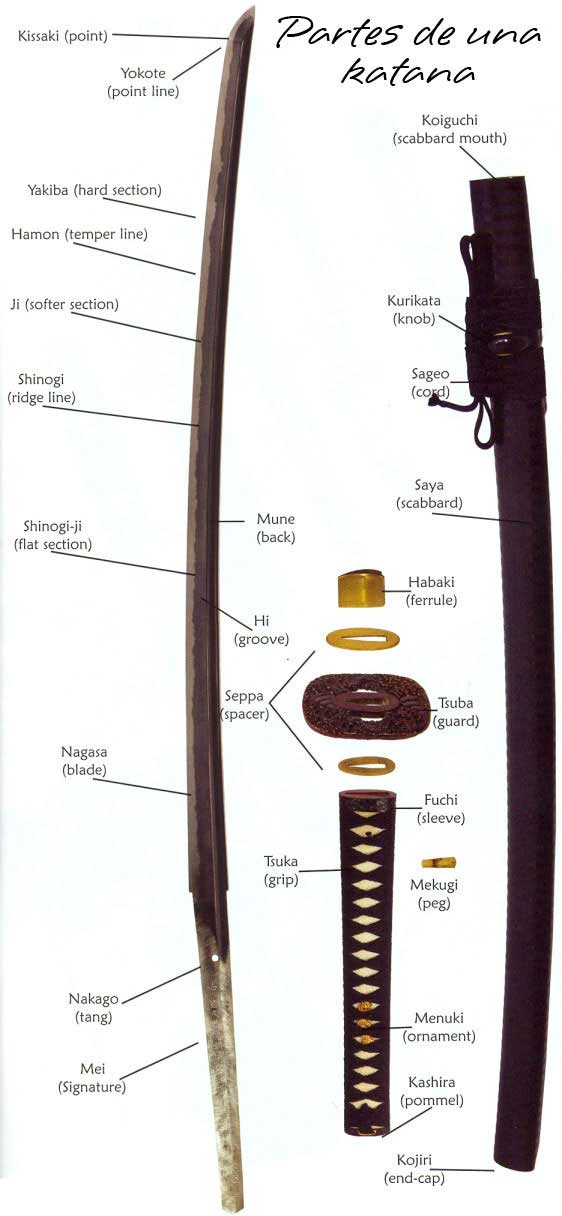What is the Nagasa?
The Nagasa is a Japanese term that refers to the length of the blade of a katana, the traditional Japanese sword known for its beauty and precision. This component is fundamental not only for the functionality of the weapon but also for its cultural and aesthetic symbolism within the historical context of Japan.
The Nagasa can vary in length, typically ranging between 60 and 80 centimeters in a standard katana, although there are variations depending on the style of the katana and its specific use. For example, katanas designed for combat may have a longer Nagasa to provide greater reach, while those intended for practice or precise cuts may opt for shorter and more manageable blades.
The measurement of the Nagasa is done from the base of the blade, where it joins the tsuba (the guard), to the kissaki, the sharp tip that defines the end of the blade. This length not only affects performance during combat but also has an aesthetic impact. Many master blacksmiths decorate the blade with intricate engravings that exemplify the legacy and culture of the Samurai, incorporating symbols that reflect the life philosophy of its owner.
The care of the Nagasa is essential to preserve the effectiveness and longevity of the katana. It is recommended to perform periodic cleaning and lubrication to prevent oxidation and corrosion. Furthermore, it is important to protect the surface of the blade from impacts and damage, as any imperfection can compromise its performance and functionality. Attention to detail in caring for the Nagasa is a reflection of respect for the samurai tradition and the craftsmanship involved in forging katanas.

In summary, the Nagasa is one of the most important characteristics of the katana, not only for its length and functionality but also for its cultural and aesthetic significance in the context of Japanese history and tradition. Mastering the care and proper use of the Nagasa is essential for any enthusiast of Japanese fencing and sword collector.
















